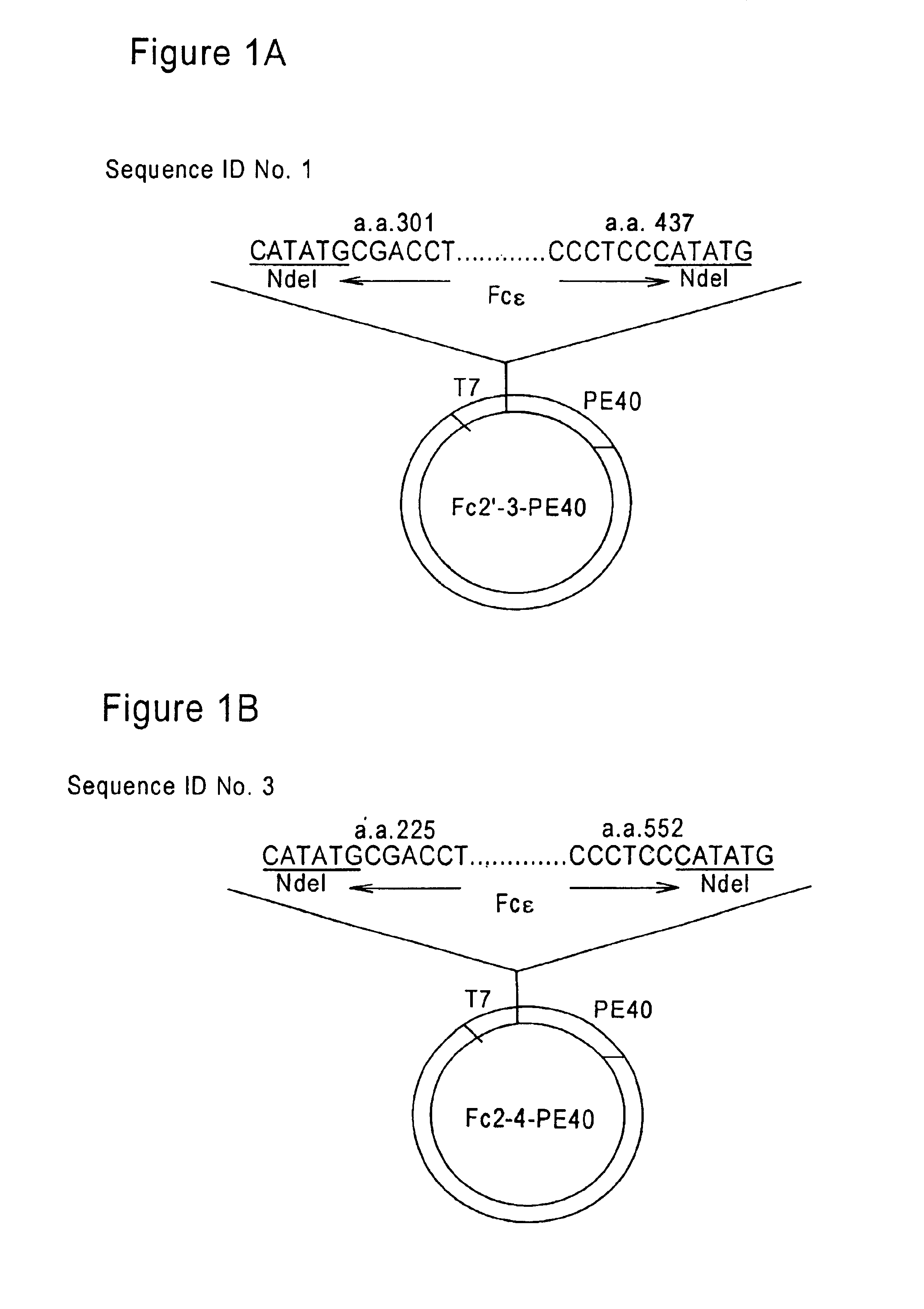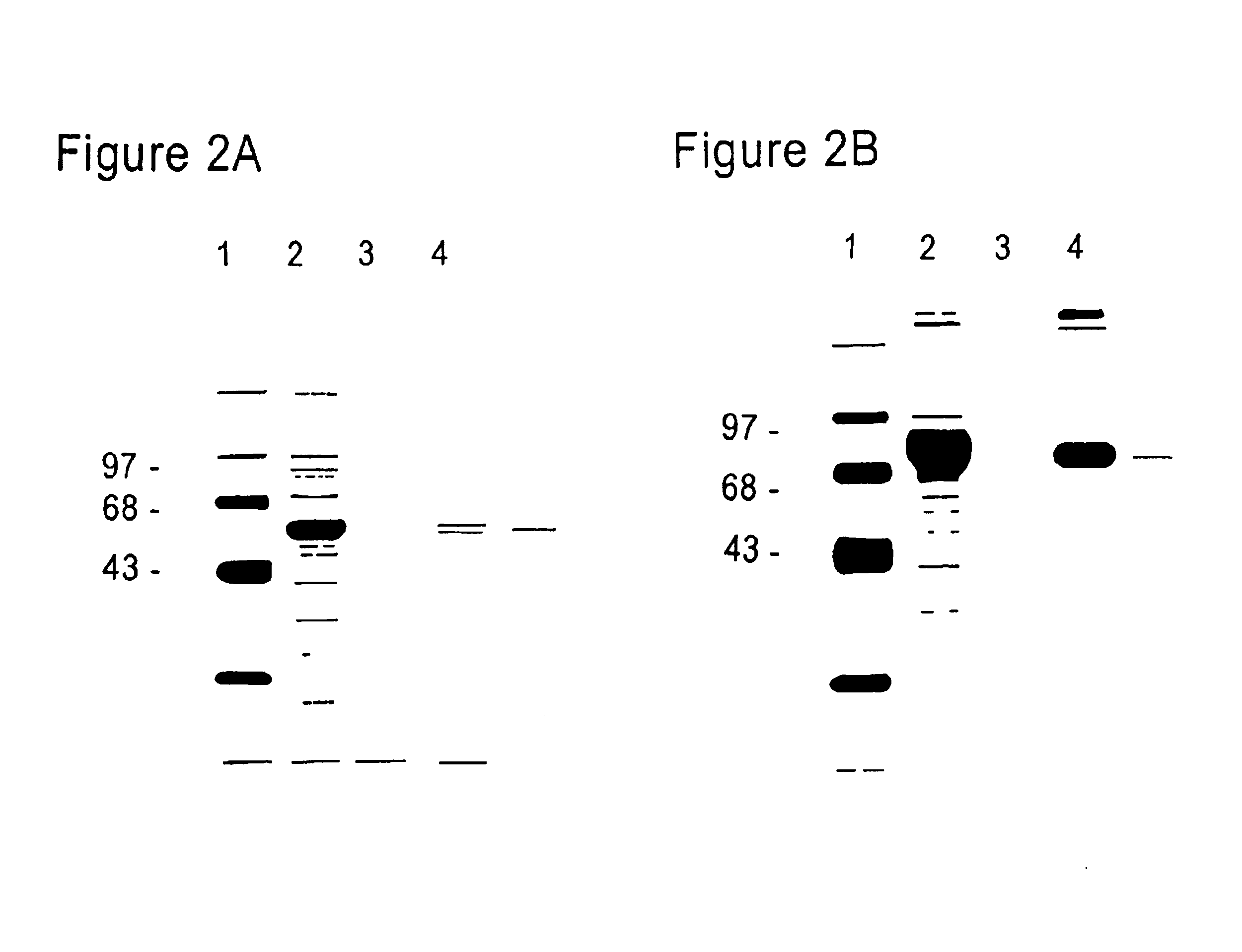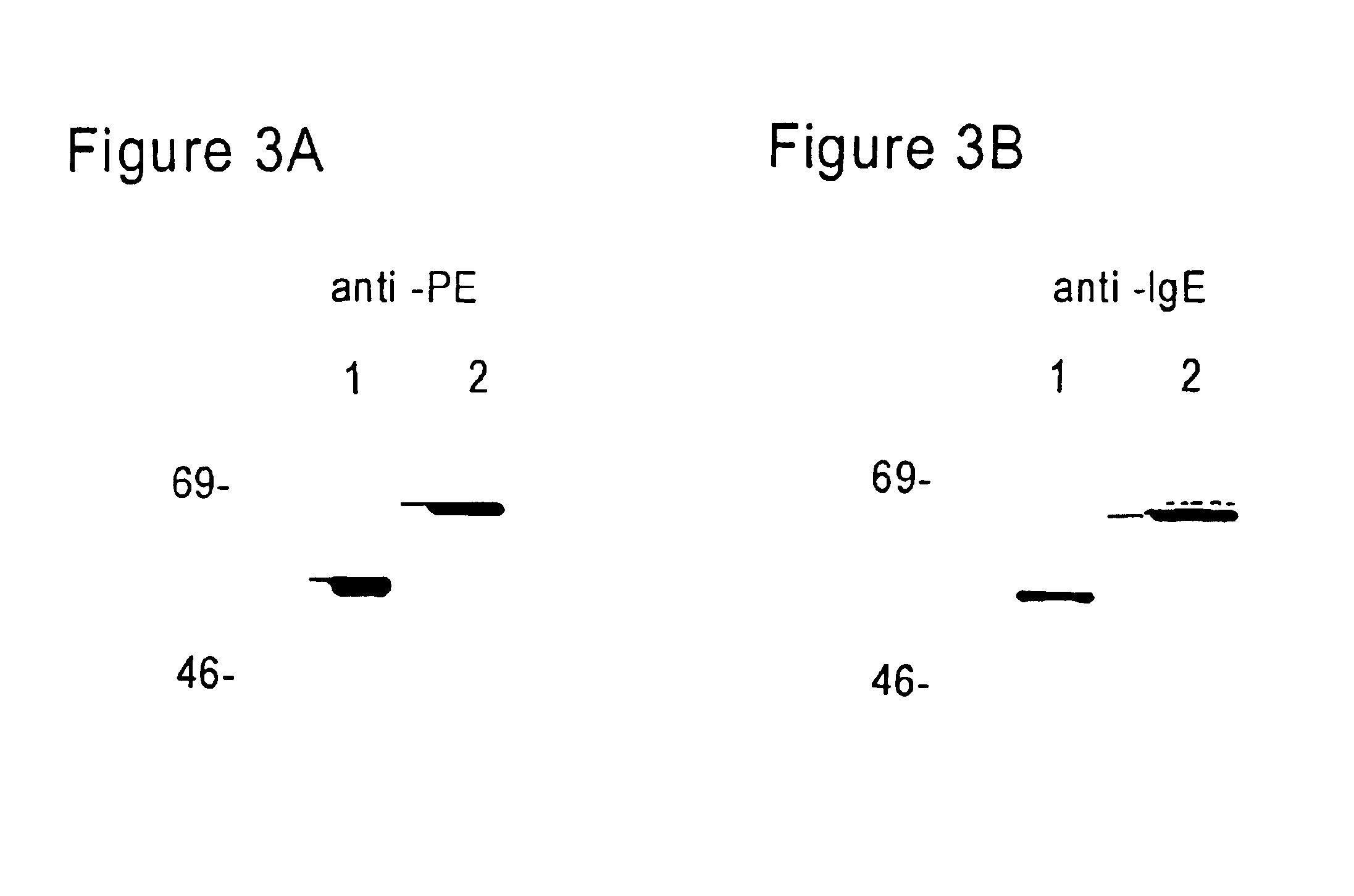FcεPE chimeric protein for targeted treatment of allergy responses, a method for its production and pharmaceutical compositions containing the same
a technology of chimeric protein and targeted treatment, applied in the direction of antibody medical ingredients, carrier-bound antigen/hapten ingredients, immunological disorders, etc., can solve the problems of serious side effects, not preventing the release of allergy mediators, but reverse or block the effect, etc., and achieve the effect of efficient killing
- Summary
- Abstract
- Description
- Claims
- Application Information
AI Technical Summary
Benefits of technology
Problems solved by technology
Method used
Image
Examples
Embodiment Construction
[0043]The Fc-PE chimeric protein according to the present invention has a number of advantages over the existing known drugs.:[0044]1. Specificity: Fc-PE is highly specific, affecting the cells (mast cells and basophils) responsible for the release of allergic mediators. As it prevents the allergic attack, it can be of great value as a prophylactic treatment.[0045]2. Toxicity: As it acts on affector cells and not on it's target organs, Fc-PE is expected to have little, if any, side effects. Moreover, as the receptor is not expressed on stem cells, no damage to bone marrow and immunosupression are anticipated. Re-institution of a normal psysiological state is expected to occur within several weeks after the end of the treatment.[0046]3. Duration of the effect: Because maturation of mast cells takes several weeks, the effect of Fc-PE is predicted to be long-standing, eliminating the need for frequent administration. Moreover, as in vitro studies indicate that reduction of 80% in cellu...
PUM
 Login to View More
Login to View More Abstract
Description
Claims
Application Information
 Login to View More
Login to View More - R&D
- Intellectual Property
- Life Sciences
- Materials
- Tech Scout
- Unparalleled Data Quality
- Higher Quality Content
- 60% Fewer Hallucinations
Browse by: Latest US Patents, China's latest patents, Technical Efficacy Thesaurus, Application Domain, Technology Topic, Popular Technical Reports.
© 2025 PatSnap. All rights reserved.Legal|Privacy policy|Modern Slavery Act Transparency Statement|Sitemap|About US| Contact US: help@patsnap.com



